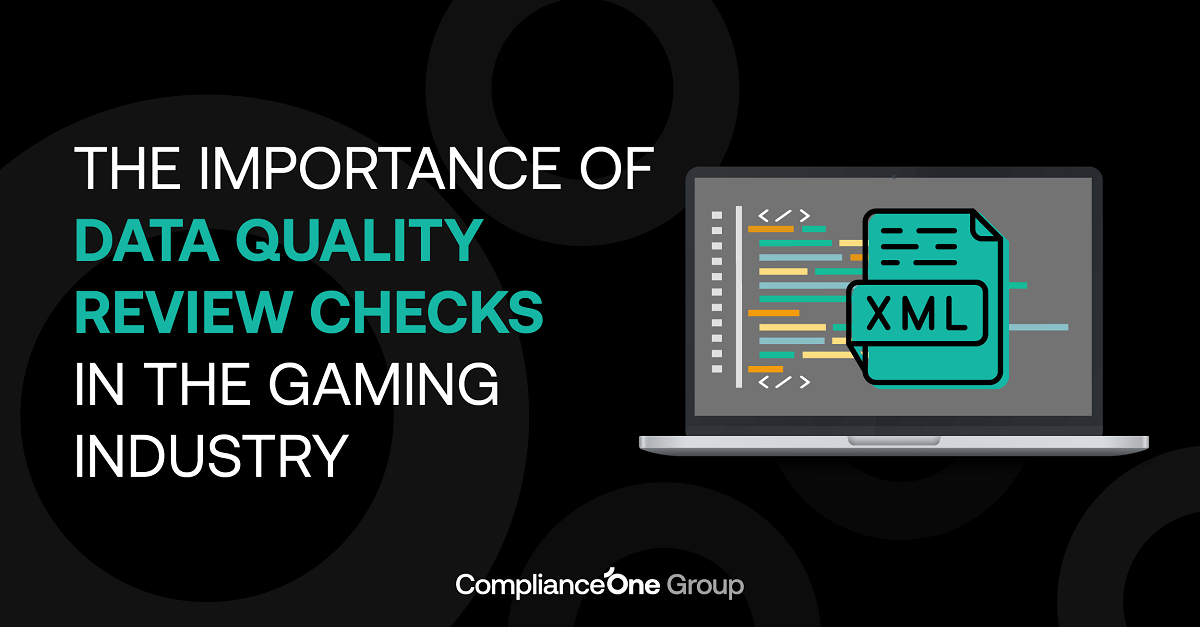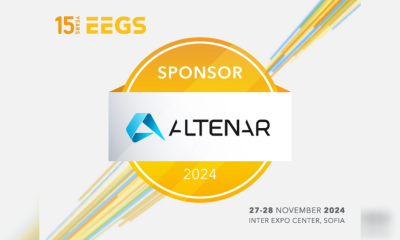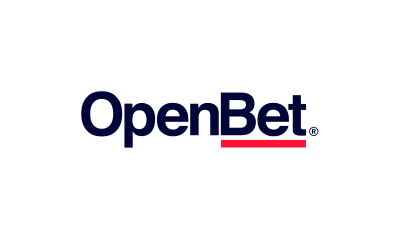Latest News
Tackling latency in next-gen gaming
Mathieu Duperré, CEO at Edgegap
Anyone that’s played a video game online has almost certainly experienced some kind of lag and connectivity issues. Despite huge infrastructure advances in the last few decades, latency remains a constant thorn in the side of gamers and detracts from the real-time experience that’s expected today.
Delivering a consistent experience to gamers playing on different devices with varying connection speeds – many of which are separated by thousands of miles – is a complex challenge. Massively popular online games like Roblox and Fortnite are just two of the many games which have benefited from years of investment into infrastructure in order to support millions of concurrent players. As the below chart from SuperJoost shows, multiplayer and online gaming is becoming the preferred way to play games amongst the most active gaming demographic, with all the technical challenges that this creates.
Games which can be played seamlessly across mobile, PC and console (so-called cross-play games) are also pushing the limits of what current internet infrastructure can deliver. Add in a new generation of streaming cloud gaming services like Stadia, Blacknut Games and Amazon’s Luna – plus Microsoft’s Game Pass and Sony’s revamped PlayStation Plus service, and you can see how the promise of console-quality performance over a broadband connection risks overloading networks that were never designed for this level of gaming.
So how can game companies, telcos and ISPs deliver on the performance promises being made to gamers? That’s where edge computing comes in.
Lag, latency and the Edge
When talking about latency it’s important to make it clear exactly what we mean. Latency refers to the amount of time it takes for game data to travel from one point to another. From the gamer’s perspective, it’s the delay between their command and seeing it happen in-game. How much latency a gamer experiences is dependent on the physical distance the data must cross through the multiple networks, routers and cables before it reaches its destination.
To use an extreme example, NASA’s Voyager 1 has made it about 14.5 billion miles from our planet so far, and it takes about 19 hours for its radio waves to reach us. Here on Earth, your latency is (hopefully) measured in milliseconds rather than hours; and gamers need around 30ms for the most optimal performance. Anywhere above 100ms can lead to noticeable lag and a frustrating experience.
This is where Edge computing comes in. As the name implies, Edge computing brings computation and data storage closer to the sources of data, placing it on the edge of the network where the performance gain is the greatest. As you’d expect, reducing unnecessary travel drastically speeds up the process providing an almost lag-free experience.
More players equals more chance for latency to be a problem
In the early days of gaming, local, couch play was part and parcel of the gaming experience. Today, a game where hundreds or even thousands of players are in the same session is nothing out of the ordinary, and there are Battle Royale games now, a whole genre of games where a hundred or more players are whittled down to a single winner.
The sheer scale of some online games dwarfs many of the most popular streaming services. Whilst Netflix remains the most successful streaming video site with 222 million subscribers, kids game Roblox has 230 million active accounts and Fortnite has over 350 million registered players. So if we assume these games reflect a growing trend, the demand on server networks is only going to increase, and gaming companies will have to look for more innovative solutions to continue meeting demand.
Cross-Platform
The ability for gamers on different devices and platforms to play and compete together is becoming an increasingly common feature of AAA multiplayer games like Apex Legends, Fornite and Call of Duty. EA Sports recently confirmed that FIFA 23 will be joining other heavy hitters in exploring cross-platform play. Considering the large amount of games on the market, and the various game modes for each game, studios are looking at crossplay to increase the amount of players who can play together. One of the main driver is to lower matchmaking time and prevent players from having to wait hours before opponents are ready to play with them.
From a latency perspective, different infrastructure across platforms means lag and downtime are far more likely. When it comes to cross-play, studios can’t use P2P (peer-to-peer) since console vendors don’t support direct communication (i.e. an Xbox can’t communicate directly with a playstation). On top of that, P2P may be limited by player’s home network (restrictive natting for example). That’s why studios typically use relays in a handful of centralised locations. Relays are seen as cheaper than authoritative server. They although have large flaws like making it harder for studios to prevent cheating, which is becoming more and more important with Web3 & NFT. This causes higherlatency since traffic needs to travel longer distances between players. For example, when Apex Legends went cross-platform, players were inundated with frame rate drops, lags and glitches.
Edge computing allows studios to deploy cross-play games as close as possible to their players, significantly reducing latency. Which can negate some of the delay issues around differing platforms.
VR and the Metaverse
Despite hitting shelves in 2016, VR is only now slowly making its way into mainstream gaming. Advances in technology have gradually improved the user experience, while also bringing the price of hardware down and closer to the mass market – not to mention the metaverse bringing renewed attention to the tech. But latency issues still present a serious hurdle to wider adoption unless it’s addressed.
Latency impacts the player experience far more in VR than in traditional gaming as it completely disrupts the intended immersive experience. A 2020 research paper found latency of over 30-35ms in VR, had a significant impact on players’ enjoyment and immersion, which was far lower than acceptable margins on a controller. But when it comes to the metaverse, achieving this might not be enough. Latency between headset and player has to be sub 5ms to prevent motion sickness.
In a recent blog, Meta’s VP, Dan Rabinovitsj, explained that cloud-based video games require a latency of around 75–150ms, while some AAA video games with high graphical demand require sub 35ms. Comparatively, Rabinovitsj suggests metaverse applications would need to reduce latency to low double or even single digits.
For better or worse, we’ve seen glimpses of what the metaverse has to offer already. Decentraland’s metaverse fashion week gave major brands like Dolce & Gabbana an opportunity to showcase virtual versions of their products. But attending journalists reported that the event was fraught with lag and glitches.
Gamers are a fickle bunch, so early adopters will simply move back to other games and platforms if they have poor initial experiences. Google’s Stadia promised to revolutionise gaming, but its fate was sealed at launch as the platform simply couldn’t compete with its competitors’ latency. Today, Google has ‘deprioritised’ the platform in favour of other projects.
If the metaverse goes to plan, it should encompass a lot more than traditional gaming experiences. But if it’s going to live up to players’ lofty expectations, akin to Ready Player One, more thought needs to be given to scalable and optimised infrastructure.
Unlocking next-gen gaming
The pace at which modern gaming is evolving is astounding, making the components discussed here work lag-free and as players expect will be a huge undertaking, and even more so when developers attempt to bring them all together in the metaverse.
The issue of latency may be less headline-grabbing than virtual fashion shows, NFTs and Mark Zuckerberg’s slightly unsettling promotional video, but the ability to seamlessly stitch all of these elements together will be critical in making the metaverse live up to expectations, and therefore, to its success.
Latest News
SIS and Premier Greyhound Racing reveal improved greyhound race time schedule

Sports Information Services (SIS), the leading multi-content supplier of 24/7 live betting services, and Premier Greyhound Racing (PGR), the media rights company supplier of greyhound racing to the betting industry and direct to viewers, have collaborated to offer a revised race time schedule starting from 20 May.
Designed to protect the long-term future of UK greyhound racing, the new schedule will see morning fixtures start slightly later – moving from 10.47 to 11.01 and 10.54 to 11.09. Additionally, there will also be a slightly later start time for some evening fixtures aimed at a retail audience, with the first evening fixture now starting at 18.08.
Commenting on the improved schedule, Terry Mahoney, Head of Business Development at ARC, said: “The new race times will help make it easier for customers to navigate busy racing schedules as well as improving operations trackside. We will continue to listen, monitor, and adapt schedules where and when needed as we move forward to deliver the best service possible for betting operators as well as punters.”
Paul Witten, Managing Director at SIS, added: “We are passionate about delivering a greyhound racing service that benefits all of the sport’s stakeholders. Together with Premier Greyhound Raxing, we have introduced a revised racing schedule that benefits operators and their customers.
“Our approach to greyhound racing is grounded in sustainability and flexibility. This collaboration with fellow service providers allows everyone to enjoy all the high-quality action produced on a daily basis from tracks across the UK and Ireland.”
SIS has long-term agreements in place with bet365, William Hill, Paddy Power and Betfred to deliver its greyhound content across UK and Irish retail and digital channels. SIS also promotes this content across dozens of leading international operators, as well as through SISRacing.tv.
PGR offers greyhound action, cards, video replays, results, news and info on greyhounds.attheraces.com, and regular live broadcasts on Sky Sports Racing. Premier Greyhound Racing is a joint venture between Arena Racing (ARC) and Entain, the global sports betting, gaming and interactive entertainment group. Between them, the two companies own nine of the 20 licensed British greyhound tracks and ARC manage the media rights for five independent tracks.
The post SIS and Premier Greyhound Racing reveal improved greyhound race time schedule appeared first on European Gaming Industry News.
Latest News
The Importance of Data Quality Review Checks in the Gaming Industry

By Lorenzo Nardini, Head of Technical Compliance and Maths Services
In the dynamic world of online gaming, data plays a pivotal role. Databases containing personal and financial information, often referred to as “Safe” databases, serve as the backbone of any gaming platform.
In this short article, I focus on control databases (CDBs) – that is how Safe databases are referred to in the Dutch landscape – and why it is important to ensure their completeness, accuracy, and consistency through continuous data quality review. In any case, the topics here covered apply to most regulated markets.
Control databases contain critical information related to player accounts, financial transactions, game rules, and security protocols. Essentially, they ensure the smooth functioning of the entire gaming ecosystem. It is no wonder that the Dutch regulator (KSA) enforces specific technical regulations on them and often perform audits on these systems that can result also in fines in cases errors are detected.
Data quality review checks
Data quality review checks play a pivotal role in maintaining the integrity of control databases, ensuring continuous compliance. Here are some key reasons why they are essential:
- Accuracy and Consistency: Control databases handle vast amounts of data, including player profiles, game logs, and financial records. Ensuring accurate and consistent data is crucial for fair gameplay, financial transparency, and regulatory compliance.
- Player Experience: Imagine a player losing progress due to a database glitch or loss of connectivity. Such incidents can lead to frustration and loss of trust. Data quality checks ensure that the control database is correctly functional, and the information therein contained can be used to handle such incomplete games, enhancing the overall player experience.
- Regulatory Compliance: Gaming companies must adhere to strict regulations regarding data privacy, security, and fairness. Regular reviews ensure compliance with industry standards and legal requirements.
Most importantly, regular reviews can help gaming companies reducing the risk of an unsuccessful audit that could typically lead to a fine and negative PR.
Ideally, data quality reviews should be ongoing. Real-time monitoring is crucial for identifying issues promptly. Additionally, scheduled audits—monthly or quarterly—help catch any long-term discrepancies or trends.
Key areas of data quality reviews
When performing checks on the quality of CDBs, the following are the main areas to consider:
- Data Completeness: Ensure that all necessary fields are populated correctly. Missing or incomplete data can lead to errors downstream.
- Data Accuracy: Cross-check data against reliable sources. For example, player balances should match financial records.
- Data Consistency: Verify consistency across different databases and systems. Inconsistencies can cause confusion and operational inefficiencies.
Starting from the specific Dutch case and then expanding to other markets, here at ComplianceOne Group we have developed a data quality review service using our experience in dealing with this form of analysis. Leveraging feedback obtained directly from regulators, we created a testing procedure that performs the following:
- Tests on triggering reports from staging environment. We access the client’s staging environment with test accounts and perform actions that are aimed at triggering specific reports in the control database. We then check that these have been correctly generated and that they contain all necessary information, checking their accuracy against the back-office.
- Data quality tests on production environment. We download a large number of reports directly from production and run a battery of tests that we have designed and that is tailored specifically at checking completeness and consistency of the information contained in the control database.
All findings are promptly reported to the client and, if needed, we can assist with solving any issues found.
Conclusion
When I started being exposed to control databases, I understood that for many this is a very technical area and that maintaining this environment functioning correctly can be quite cumbersome. Nevertheless, a commitment to data quality is a necessary for ensuring continuous compliance of gaming platforms. If you are interested in running regular data quality reviews, or even just a one-time overall check, contact me and I will be happy to assist!
The post The Importance of Data Quality Review Checks in the Gaming Industry appeared first on European Gaming Industry News.
Latest News
7777 gaming signs a strategic iLottery content deal with Scientific Games

7777 gaming, a leading provider of digital gaming solutions, has announced a significant strategic partnership with Scientific Games a global leader in retail and digital lottery games, technology, analytics and services, to deliver digital lottery games through the SG Content Hub Partner Program.
The SG Content Hub Partner Program is a unique platform and game content partnership program featuring an expanding, highly curated selection of iLottery games from best-in-class, game studios worldwide in a variety of play styles appealing to all player types in multiple languages, as well as access to select licensed properties from the largest licensed brands portfolio in the lottery industry. Scientific Games currently serves 150 lotteries in 50 countries.
Elena Shaterova, Chief Commercial Officer at 7777 gaming, expressed enthusiasm about the partnership: “Partnering with Scientific Games represents a significant milestone for 7777 gaming, solidifying our position as a global leader in digital lottery solutions. Through this collaboration, we are poised to deliver unparalleled gaming experiences to players worldwide, driving innovation and growth in the lottery industry.”
Steve Hickson, VP of Digital Games at Scientific Games commented: “We are delighted to welcome yet another top-class lottery game studio to the SG Content Hub Partner Program. The addition of 7777 gaming and their fantastic games aligns perfectly with our goal to make a variety of digital lottery content available to existing and new Scientific Games customers. Our SG Content Hub Partner Program is developing at pace as we continue to provide our customers with frictionless access to the very best content in the industry.”
The SG Content Hub Partner Program offers a one-stop solution for accessing multiple iLottery game studios, seamlessly integrating with a lottery’s existing gaming systems and iLottery technology. It streamlines operations, simplifies tech integrations, and enhances data analytics to drive game development and iLottery portfolio management.
7777 gaming is renowned for its ability to deliver high-quality iLottery games tailored to the unique requirements of different lotteries. The company ensures that its game content meets stringent government regulations and operators’ expectations for customization. With custom-made lottery concepts, 7777 gaming guarantees enhanced player satisfaction and fosters a deeper sense of connection and loyalty to the brand.
The post 7777 gaming signs a strategic iLottery content deal with Scientific Games appeared first on European Gaming Industry News.
-

 Baltics3 weeks ago
Baltics3 weeks agoLithuania’s Nese enters iGaming with a record sponsorship deal
-

 Asia1 week ago
Asia1 week agoOnlyplay Enters into Strategic Partnership with Ritchie Rabbit
-
Africa3 weeks ago
BMM Testlabs Continues Its Expansion in Africa with New Licenses in Botswana and Nigeria to Test Land-Based and Digital Products
-
Australia4 weeks ago
VGCCC Fines Bookmaker MintBet $100,000 for Repeat Breaches of its Responsible Gambling Code of Conduct
-
Africa3 weeks ago
KingMakers’ Nigerian operating business, BetKing, selects Genius Sports to power growth with in-play trading services
-

 Conferences in Europe3 weeks ago
Conferences in Europe3 weeks agoAltenar becomes General Sponsor of EEGS 2024
-

 EurAsia3 weeks ago
EurAsia3 weeks agoFastex Forges Partnership with Olympionic Foundation to Boost Sports Development in Armenia
-

 Press Releases2 weeks ago
Press Releases2 weeks agoOpenBet Powers Record-Breaking 100,000+ Peak Bets per Minute at Grand National 2024




